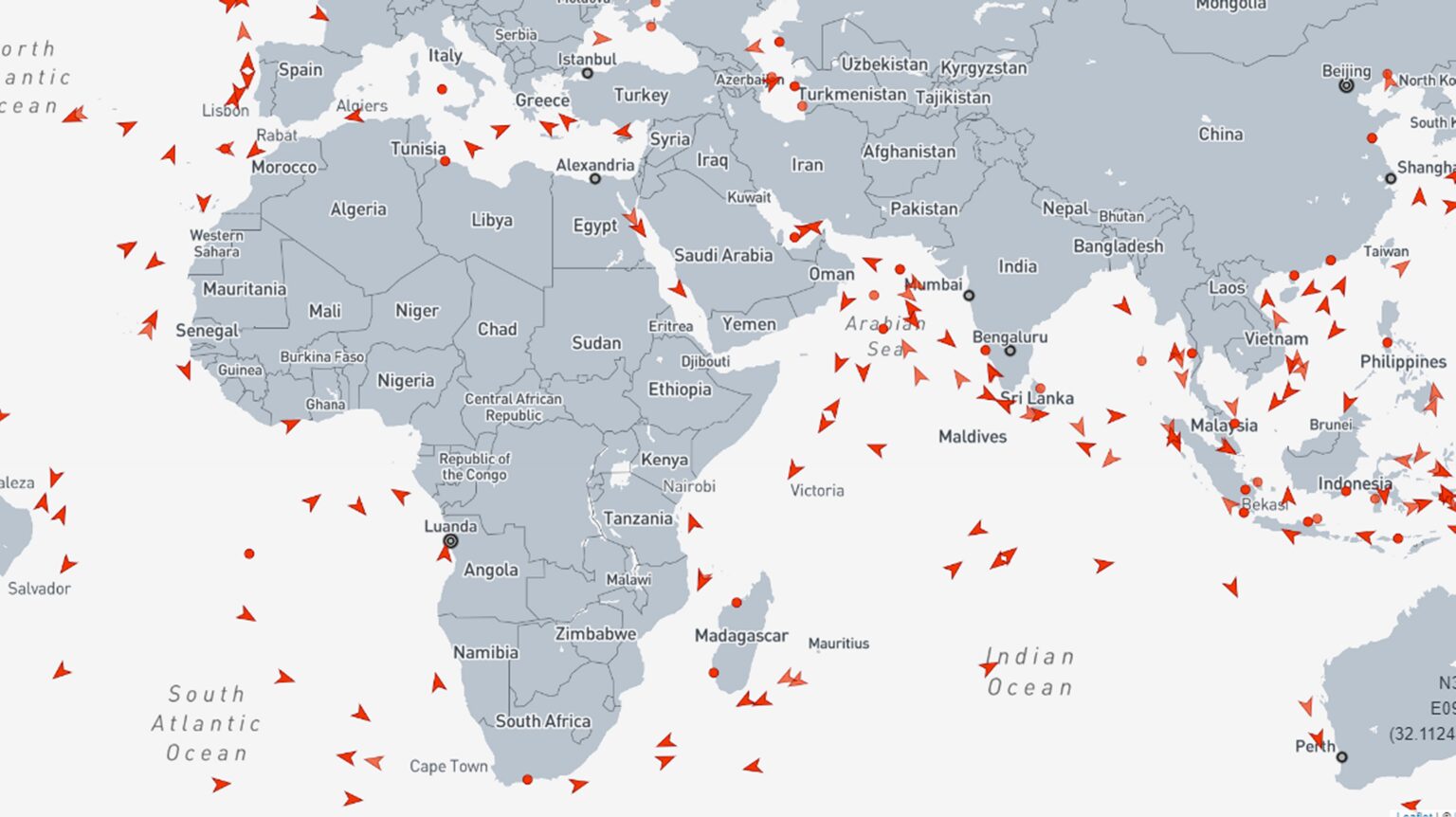With no end in sight for the Red Sea crisis, detours around Africa’s Cape of Good Hope are soaking up even more vessel capacity and pushing up spot rates across multiple shipping segments.
Freight fallout began with container ships. It is now significantly impacting product tankers — the vessels that transport gasoline, diesel, jet fuel, naphtha and other petroleum products.
Larger product tankers that do long-haul runs are diverting around Africa in increasing numbers. These ship types include LR1s (with capacity of 55,000-79,999 deadweight tons or DWT) and LR2s (80,000-119,000 DWT).
Extended transit times for long-haul product tankers are having the knock-on effect of hiking demand for regional replacement shipments using short-haul vessels known as MRs (25,000-54,999 DWT).
Fuel prices are being effected, as well. “The current halt of east-to-west diesel flow through the Red Sea and Suez Canal has already pushed diesel prices in Europe higher, with further increases expected as deliveries slow due to vessels rerouting around Africa,” said Frode Mørkedal, shipping analyst at Clarksons Securities, in a client note.
Tanker rates ‘definitively seeing upward pressure’
Evercore analyst Jon Chappell said in a report on Wednesday, “Longer voyages as more tankers bypass the important Red Sea/Suez Canal chokepoint will further add to ton-miles [volume multiplied by distance], potentially causing vast disruption to trade routes and adding more potential upside to spot rates that are already supported by strong fleet utilization.”
According to Deutsche Bank analysts Amit Mehrotra and Chris Robertson, “Container freight rates were one of the first to move on the Red Sea disruption, but we are now definitively seeing upward pressure on both mid-sized crude tanker and long-range and medium-range product tanker rates.”
According to Eirik Haavaldsen of Pareto Securities, “As it stands today, no product tankers look set to use the Suez Canal during the first half of February — and this will imply near-zero middle-distillate arrivals from the Middle East Gulf and India to Europe during that time.
“Since the EU ban on Russian cargoes in Q1 2023, these imports have been in the 800,000 to 1.1 million barrel-per-day [b/d] range, and we are consequently going to either see significant stock draws or the need for replacement cargoes.
“So far, we have seen an increase in [EU] diesel imports from the U.S., which have reached 350,000-400,000 b/d so far in January versus 100,000-200,000 b/d last year,” said Haavaldsen.
Product tanker rates near cyclical highs
Spot rates for modern-built (2015 or later) LR2s averaged $84,800 per day on Wednesday, up 132% year on year (y/y), according to data from Clarksons.
LR2 rate gains are being led by the Middle East Gulf-Europe route — the trade directly affected by Houthi attacks in the Red Sea — with modern-built LR2 spot rates on this route now averaging $92,100 per day.
“Product tanker rates have continued to gap up,” said Jefferies analyst Omar Nokta on Wednesday. “LR2s in particular have broken out. With the vessels fixed to the European market most likely to divert around the Cape of Good Hope, many of these will be laden for longer and lead to an even tighter balance in the coming weeks.
“Current LR2 earnings are approaching highs seen during this cycle,” said Nokta, noting that they are just below average highs of $90,000 per day briefly reached in December 2022.
Rates for modern-built LR1s averaged $61,600 per day on Wednesday, according to Clarksons, double rates a year ago. The Red Sea situation is “providing a catalyst for the spike in [LR1] rates,” said ship brokerage BRS on Monday.
Rates for modern-built MRs were at $45,600 per day, up 84% y/y, according to Clarksons.
BRS noted that the Red Sea restrictions for LR tankers “lift MR utilization … as Asia and Europe turn to short-haul trades to cover up for their shortfall in longer-haul arbitrage inflows.”
Product tanker stocks don’t reflect rates yet
The Red Sea crisis has pushed up stocks of U.S.-listed product tanker owners, yet these equities have not risen to the same extent as freight rates.
Shares of Ardmore Shipping (NYSE: ASC) rose 5% on Wednesday and were up 15% year to date (YTD). Scorpio Tankers (NYSE: STNG) was up 4% Wednesday, 14% YTD. Torm (NASDAQ: TRMD) rose 1% Wednesday, 18% YTD.
“In the equity market, valuation does not reflect recent rate improvements or the prospect of a stronger market in 2024,” wrote Mørkedal on Monday. “We believe that product tanker equities offer excellent risk/reward because little of the ongoing strength has been priced in.”
Reference : https://www.freightwaves.com/news/shipping-fallout-from-red-sea-crisis-spreads-to-product-tankers

